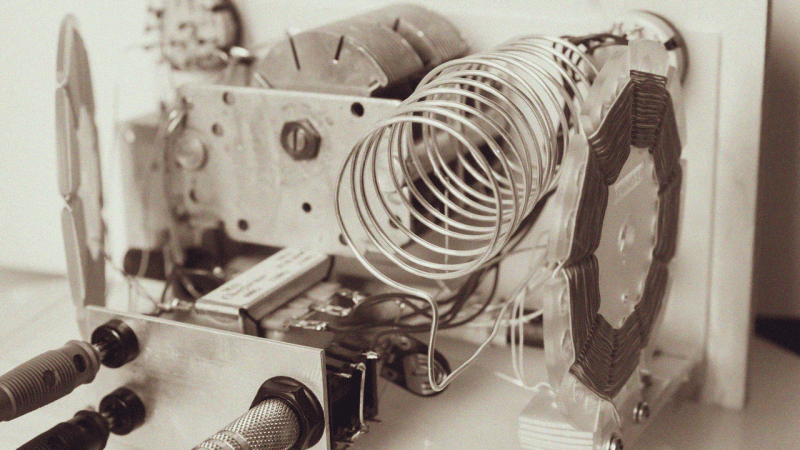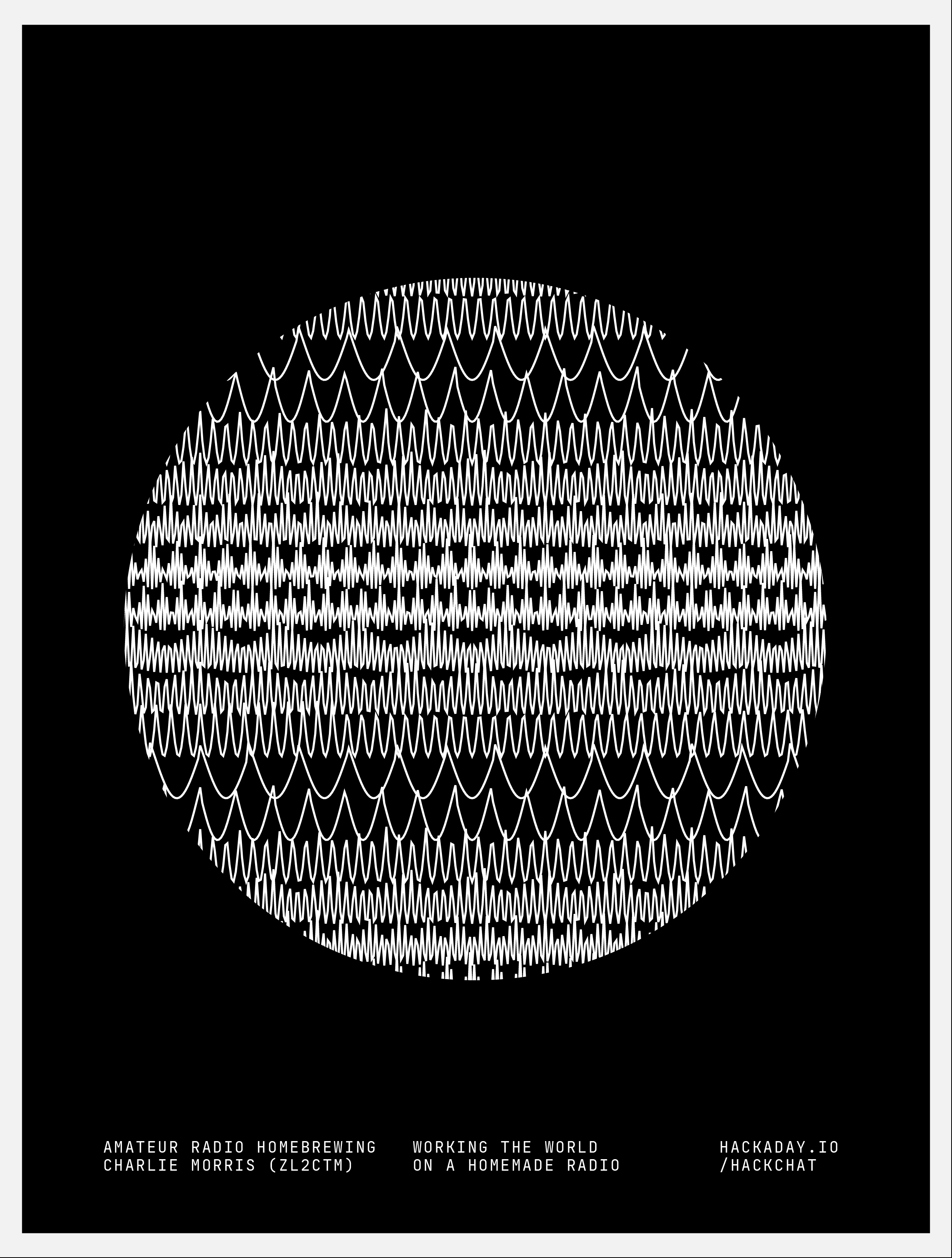Join us on Wednesday, March 18 at noon Pacific for the Amateur Radio Homebrewing Hack Chat with Charlie Morris!
For many hams, the most enticing part of amateur radio is homebrewing. There’s a certain cachet to holding a license that not only allows you to use the public airwaves, but to construct the means of doing so yourself. Homebrew radios range from simple designs with a few transistors and a couple of hand-wound coils to full-blown rigs that rival commercial transceivers in the capabilities and build quality — and sometimes even surpass them. Hams cook up every piece of gear from the antenna back, and in many ways, the homebrewers drive amateur radio technology and press the state of the art forward.
Taking the dive into homebrewing can be daunting, though. The mysteries of the RF world can be a barrier to entry, and having some guidance from someone who has “been there, done that” can be key to breaking through. New Zealand ham Charlie Morris (ZL2CTM) has been acting as one such guide for the adventurous homebrewer with his YouTube channel, where he presents his radio projects in clear, concise steps. He takes viewers through each step of his builds, detailing each module’s design and carefully walking through the selection of each component. He’s quick to say that his videos aren’t tutorials, but they do teach a lot about the homebrewer’s art, and you’ll come away from each with a new tip or trick that’s worth trying out in your homebrew designs.
Charlie will join us for the Hack Chat this Wednesday to discuss all things homebrewing. Stop by with your burning questions on DIY amateur radio, ask about some of Charlie’s previous projects, and get a glimpse of where he’s going next.
 Our Hack Chats are live community events in the Hackaday.io Hack Chat group messaging. This week we’ll be sitting down on Wednesday, March 18 at 12:00 PM Pacific time. If time zones have got you down, we have a handy time zone converter.
Our Hack Chats are live community events in the Hackaday.io Hack Chat group messaging. This week we’ll be sitting down on Wednesday, March 18 at 12:00 PM Pacific time. If time zones have got you down, we have a handy time zone converter.
Click that speech bubble to the right, and you’ll be taken directly to the Hack Chat group on Hackaday.io. You don’t have to wait until Wednesday; join whenever you want and you can see what the community is talking about.


















A good ground (like copper circuit board) and short leads. It’s harder the higher the frequency, but the anticipation of difficulties may be worse than reality.
The first few things I tried to build, I could never get them to work. I barely knew anything, I was using a wood burning iron to solder, I wouldn’t have known if the substitutes from the parts store were suitable or the same pinout.
The first thing that worked was a crystal oscillator, the leads just twisted together, made with parts I ripped out of a transistor radio. But by then I knew enough that I could get things going.
So.start small. Actually, things like a crystal oscillator and single stage amplifiers and even a “grid dip oscillator” are simple but will be useful for later testing.
Of course, transistors have to have enough gain at higher frequencies,but at this point most are capable enough.
My blind brother will become a ham in a few weeks. I’m thinking about making for him a transceiver with synth speech interface to read out settings, frequency and other parameters. I’d probably to get a license too to make it though. BTW, there is only one company that makes ham radios for the blind and visually impaired, but these are absurdly expensive…
I remember reading an article from the fifties or early sixties about a blind ham who built his equipment.
In the past there were articles about modifying commercial equioment for blind users. Knobs that had a protrusion so you knew where it pointed, adapters for meters that changed tone as the reading changed (it’s easier to detect frequencies change tyan amplitude change). There was even a project for a frequency counter that sent morse code instead of a readout, though that was intended for portable operation where size mattered.
I know at one point there were programs to get blind people into amateur radio. I think tye CNIB here in Canada had a program. They might have references to useful articles. Or maybe not, maybe the internet replaces ham radiio, the advantage that everyone can use a cellphone or computer. The ARRL in the US might still have resources.
SDR is a good option for the blind, as long as software can be read by screen reader software for the computer/smartphone/tablet…
I was thinking about using a microcontroller and DDS or PLL for frequency control and either a TTS chip or prerecorded samples in memory for reading the parameters aloud. There was a “talking clock” project in local magazine devoted to electronics that used that second technique. I think it was from around 1998…
Checkout handiham.KG4RRN
This, regarding a talking SWR meter was, just posted on the HBTE group: https://www.qsl.net/py2ohh/trx/swrtalk/swrtalk.html
https://groups.io/g/HBTE/message/1268
Radioddity sells a DMR radio that has an entirely audio driven interface and no display – the GD-77S. You have to program it with a computer, but it’s a decent radio and cheap.
Out of curiosity, what is the company you’re talking about making radios specifically for the blind? Never come across them before.
Kenwood makes them. It is a rather niche market, so no wonder most hams never heard of blind-friendly transceivers…
You should consider that the smaller the market, the more it costs to make each individual product. Mass production is what gives us all the goodies of modern society. What if there was only a market for a few hundred cell phones every year? They’d cost thousands of dollars even for a flip phone.
So when you think something is absurdly expensive, consider that. I was thinking about that in terms of some of the higher end Ham radios for folks like me who are not disabled in such a manner as to need special interfaces. I’d love to be able to afford a Yaesu FT-101DX but I’ll have to settle for my kenwood TS-450S and maybe in a year or two a Yaesu FT-450 or maybe an Icom 7300. But for me, some of those radios are beyond absurdly expensive and are basically made of unobtainium.
So get your license and maybe work on building him the interfaces he needs to enjoy our wonderful hobby. and maybe find out if there’s enough market for you to start selling those interfaces. That would be cool.
This is the way…
We got lost for a while with Icoms and Yaesus but the innovation is back in our hands with SDR, DSPs, analog filter ICs, and easy to program microcontroler IDEs.
At this point there is no good reason except perhaps a physical inability to solder(and community members should be stepping up to skill trade with diffabled) to buy an off the shelf rig when you can have anything you want in any mode or output power customized to your needs.
At this point it is actually obtaining a perfectly sized, tough, and water resistant, but heat dissipating case and not the electronics which is slowing down hams; and a community culture outside of the dominant DIY in QRP which has forgotten we design and build our own gear not just antennas.
As for diff-abled folks other than aiming your iron at a small component among folks at the ham club vision different abled are well represented(notice most larger radios post ’95 or so have option for voice board), you don’t need to see to pick out CW from a noisy environment. For those who can remember vision diffabled were a very large percentage back in the phone phreaking community too.
73
I have excellent vision but I can already ‘read’ code over the air, non of my DIY radios have a screen. What possible reason would anyone have for a flimsy screen as a primary display when you can avoid a wasteful and fragile component and just read out the settings in code over the audio interface when you push a button.
I apologize in advance if this is only a comment to one single post, I meant it to add to the extended thread
I myself am a total blind with {RP} ham, I read through this thread and decided to share a couple of sites for anyone interested, and yes most Kenwoods are accessible with a speach board, unfortunately a bit to pricey for my income.
https://www.blindhams.com/
and
https://active-elements.org/
ICanWorkThisThing.com had a good idea but I haven’t seen much growth on there unfortunately
Thanks for making such an interesting thread.
73 Joe N8JEW
using JFW from freedomscientific.com for PC access